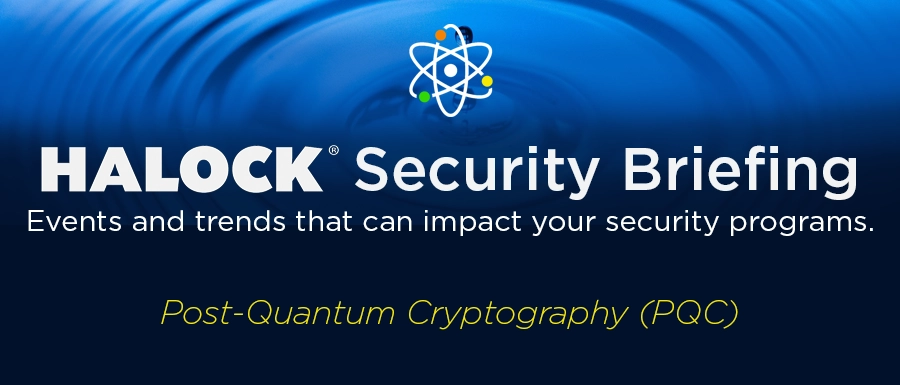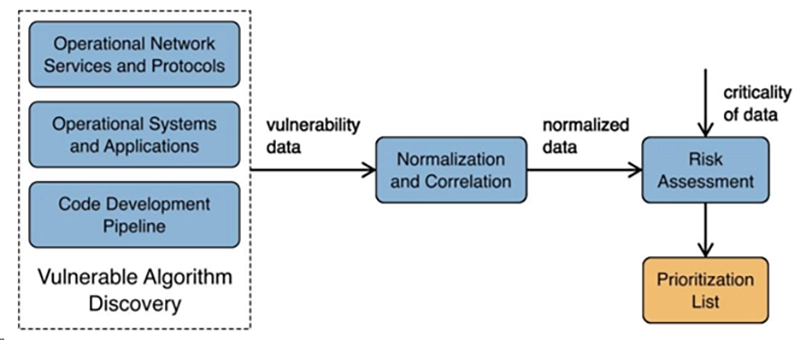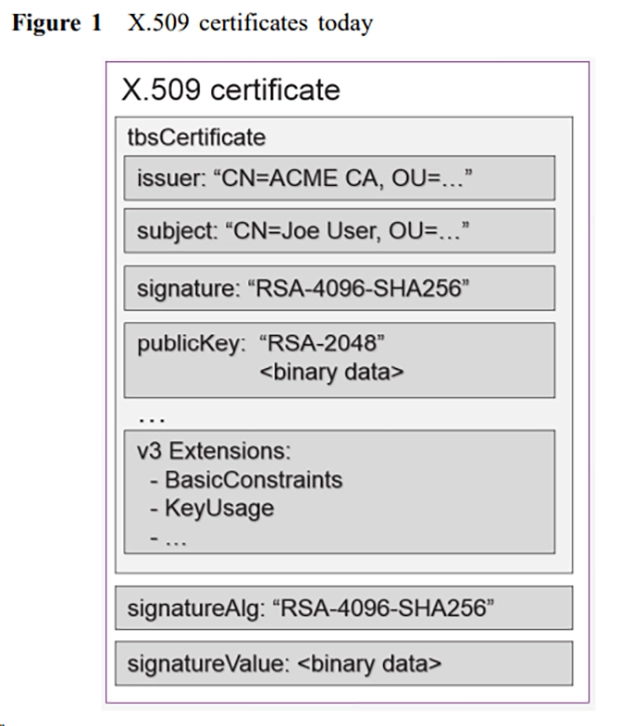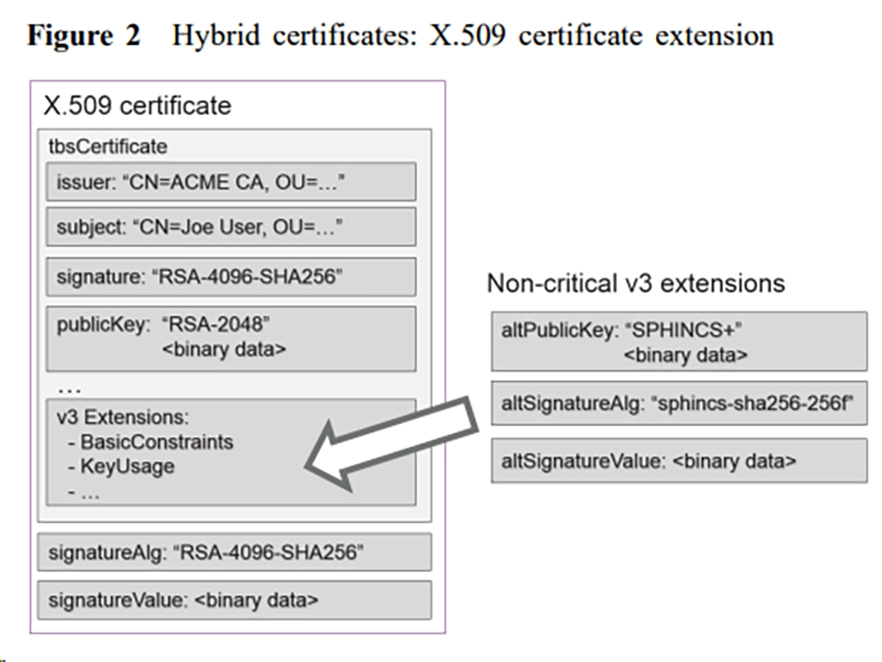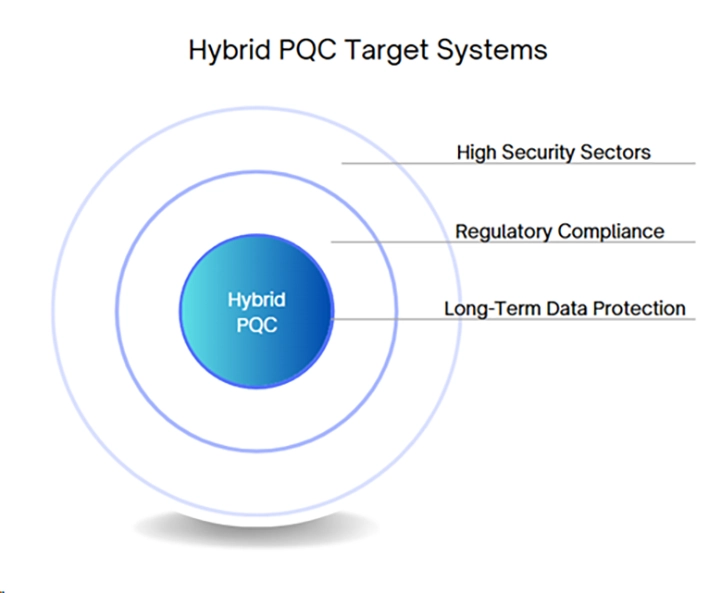As Chief Information Security Officers (CISOs), it is your responsibility to lead the way in safeguarding your organization’s data and systems against ever-evolving threats. The emergence of quantum computing represents a seismic shift in cybersecurity. Advanced quantum computers are projected to render many existing cryptographic algorithms obsolete within the next 10 to 20 years, necessitating the adoption of Post-Quantum Cryptography (PQC) to ensure long-term data security. For example, China’s use of D-Wave’s[1] quantum computers to experiment with breaking RSA encryption underscores the urgency of transitioning to quantum-resistant solutions.[2]
A successful post-quantum cryptography migration will take time to plan and conduct.[3] CISA, NSA, and NIST urge organizations to begin preparing now by creating quantum-readiness roadmaps, conducting inventories, applying risk assessments and analysis, and engaging vendors.
This primer provides an overview of PQC, the risks posed by quantum computing to current cryptographic systems, and the advantages of adopting a hybrid approach to transition securely and effectively over time.
Quantum Computing and Cryptographic Vulnerabilities
The Threats
- Breaking Public-Key Cryptography: Quantum computers, using Shor’s algorithm[4], quantum computer algorithm for calculating the prime factors of a number, will efficiently solve problems like integer factorization (used in RSA) and discrete logarithms (used in ECC). These capabilities will compromise the foundational security of public-key systems relied upon for financial transactions, secure communications, and more.
- Pre-computation Attacks on Symmetric Cryptography: Symmetric algorithms are less vulnerable but not immune. Symmetric cryptographic algorithms (like AES or 3DES) rely on brute-force resistance as a cornerstone of their security. A brute-force attack involves systematically trying all possible keys until the correct one is found. Grover’s algorithm[5] effectively reduces the effort required for such attacks from to the square root of thus impacting the perceived security of symmetric cryptographic systems.
Therefore, Grover’s algorithm doesn’t “break” symmetric cryptography, though it reduces the effective security of symmetric encryption, necessitating larger key sizes to maintain equivalent protection.
Quantum Computing Risks
- Loss of Confidentiality: Adversaries could decrypt sensitive data retroactively through “store now, decrypt later” attacks.
- Loss of Integrity: Compromised digital signatures could enable undetected tampering with data.
- Infrastructure Vulnerabilities: Critical systems, from financial networks to supply chains, may become susceptible to attacks.
A Risk Informed PQC Solution
PQC includes cryptographic algorithms designed to resist quantum attacks while operating on classical computing systems, ensuring compatibility with existing infrastructure. This compatibility allows organizations to transition to quantum-resistant solutions without a complete overhaul of their current systems, minimizing disruptions and leveraging existing investments while preparing for future security demands. While this may seem straightforward at a glance, several studies and reports examine the time, effort, and expertise required for organizations to transition to quantum-resistant cryptographic systems. These studies[6] collectively underscore the importance of starting early, as transitioning to PQC is a complex, multi-year effort requiring significant expertise and resources.
Key Features of PQC:
- Quantum Resistance: Designed to withstand attacks by quantum computers.
- Diverse Approaches: Includes lattice-based, hash-based, multivariate, and code-based cryptography.
- NIST Standardization: The National Institute of Standards and Technology (NIST) is finalizing PQC standards, with initial algorithms such as CRYSTALS-Kyber for key encapsulation and CRYSTALS-Dilithium[7] for digital signatures expected to be widely adopted.
A Hybrid Approach: The Triple Crown Strategy
A hybrid approach to implementing PQC combines classical cryptography with quantum-resistant algorithms, creating a secure and adaptable transition strategy. For the sake of clarity, this does not mean all systems in all scenarios should use PQC and classical cryptography together. This approach involves using a mix of PQC and classical algorithms across the organization. In specific cases, both algorithms may be employed on the same system or component where appropriate. For example, a critical financial system could employ PQC for securing new data transmissions while retaining classical algorithms for backward compatibility with legacy systems.
Why the Hybrid Approach is the Triple Crown:
- A Bridge Between Classical and Quantum-Resistant Algorithms
- Combines existing cryptographic methods with post-quantum solutions to ensure adaptability.
- Prepares for future quantum attacks without compromising current security.
- Redundant Layers of Security
- Provides multiple defense layers, ensuring that even if one algorithm is compromised, another remains effective.
- Flexibility and Backward Compatibility
- Enables gradual adoption of PQC without disrupting existing systems.
- Maintains secure communication with legacy infrastructure during the transition. For example, Meta has successfully implemented hybrid cryptographic systems to transition gradually while ensuring robust protection against quantum threats, illustrating how hybrid solutions can be deployed effectively in large-scale environments.[8]
- This nuanced implementation ensures that organizations can balance security needs with operational requirements during the transition to quantum-resistant cryptography
Practical Steps for CISOs to Implement a Hybrid Strategy
- Start Planning Early and Establish a Quantum-Readiness Roadmap
- Given the projected timeline for quantum computers to become sufficiently powerful, preparing for post-quantum cryptography should be on your organization’s long-term roadmap.
- Discuss Quantum Safe Roadmaps with your technology vendors.
- Understand Your Risk: Assess Cryptographic Dependencies and Evaluate Environments
- Conduct a cryptographic inventory to identify systems reliant on quantum-vulnerable algorithms. Tools like cryptographic management platforms, vulnerability scanning software, or manual audits can assist in this process by pinpointing at-risk systems and prioritizing them for remediation.
- Review operating environments for compliance with PQC standards. For instance, many cloud vendors now support hybrid post-quantum TLS (e.g., AWS PQ-TLS).
- Review the internal code development pipeline.
- Identify gaps in current configurations and assess external and in-house solutions.
- Prioritize systems with long-term security needs, such as financial transactions and digital signatures.
(Source: National Institute of Standards and Technology)
- Leverage Risk and Threat Registers
- Update the organization’s risk register and threat register to include risks associated with quantum computing. This helps prioritize remediation efforts by aligning risk management activities with business objectives, ensuring that resources are directed toward addressing the most critical vulnerabilities first.
- For organizations without such tools, establish a structured risk management program as part of broader IT Governance.
- Adopt a Hybrid Approach
- Implement hybrid cryptographic systems combining classical and post-quantum algorithms (e.g., RSA + Kyber) as the solutions become available. For example, a hybrid implementation of the TLS protocol where required could use RSA for backward compatibility with legacy systems while incorporating CRYSTALS-Kyber for quantum resistance in securing data exchanges. Hybrid certificates will use these PQC algorithms to deliver the same functions as traditional TLS certificates, with added protection against quantum-enabled attacks.
- Focus on critical systems first, ensuring layered security.
- Use insights from evaluations to create a remediation program to address vulnerabilities over time.
- Remember, this approach involves using a mix of PQC and classical algorithms across the organization. In specific cases, both algorithms may be employed on the same system or component where appropriate.
- Pilot and Test
- Deploy hybrid systems in controlled environments to evaluate performance and interoperability.
- Conduct rigorous testing, including penetration testing and cryptanalysis, to validate security.
- Target systems requiring long term data production and regulatory compliance first as data confidentiality is most immediately at risk.[10]
- Systems with limited resources, like IOT, will present significant challenges.
- Implement a Transition Program and add cryptography lifecycle management
- Set timelines for PQC adoption aligned with organizational needs and quantum computing advancements.
- Plan for ongoing updates as PQC standards evolve.
- Regularly update risk and threat registers to reflect progress.
Fallback to Classical Cryptography: Managing Interoperability Risks
In a hybrid cryptographic system, interoperability is a key consideration. When a communicating party, whether a user, device, or external system, does not support post-quantum cryptographic algorithms, the encryption mechanism will typically default to classical cryptography to maintain compatibility. While this ensures uninterrupted communication, it introduces a potential vulnerability: data transmitted using only classical encryption remains susceptible to future quantum attacks.
How Hybrid Cryptography Handles Incompatibility
Most hybrid encryption implementations, including hybrid PQ TLS, are designed to negotiate the strongest mutually supported cryptographic algorithms. If one party lacks PQC support, the system will revert to classical encryption methods such as RSA or ECC unless a hybrid PQC-enabled cipher suite is mandated. If hybrid PQC-enabled cipher suite is mandated, the system will reject connections lacking PQC support. This fallback behavior ensures continued functionality but comes with important security trade-offs.
Security Implications of Fallback Mechanisms
- Long-Term Confidentiality Risks – Any data secured solely with classical encryption could be decrypted retroactively by future quantum adversaries. Sensitive, long-lived data is particularly at risk in “store now, decrypt later” scenarios.
- Silent Downgrades – In some cases, fallback behavior may not be transparent to end users or system administrators, leading to an unintentional reliance on weaker encryption. Logging and monitoring downgrade events are essential for maintaining visibility.
- Mixed Security States – Organizations transitioning to PQC may find themselves in a mixed environment where some systems support hybrid cryptography while others do not, requiring careful risk assessment and phased upgrades.
Mitigation Strategies
- Monitor and Log Downgrade Events – Security teams should track when cryptographic protocols fall back to classical encryption, allowing for proactive remediation.
- Implement Policy-Based Enforcement – Where feasible, organizations can enforce policies requiring hybrid cryptographic support for high-risk transactions, preventing automatic fallback to classical-only encryption.
- Engage with Vendors – Vendors should be assessed for their PQC readiness, ensuring that third-party services and products align with the organization’s quantum-resistant security strategy.
As hybrid cryptographic solutions gain wider adoption, the risk of fallback scenarios will decrease. However, in the interim, organizations must balance security with interoperability, ensuring that mission-critical data is protected even when full PQC adoption is not yet universally available. The hybrid approach ensures systems can continue communicating securely while PQC adoption grows.
Addressing CISO Concerns
Performance Overhead
Hybrid systems developed in-house, and those provided by trusted vendors may introduce performance challenges due to dual cryptographic operations. To mitigate this:
- Leverage vendor-provided solutions optimized for hybrid systems and engage the vendors with detailed queries about their solutions.
- Select efficient PQC algorithms, such as CRYSTALS-Kyber and CRYSTALS-Dilithium, proven effective in real-world scenarios.
Standardization Uncertainty
The evolving PQC landscape can create uncertainty. Address this by:
- Adopting NIST-approved hybrid algorithms as they become available.
- Stay informed about advancements in PQC research and standardization.
- Adopting product, system, component, and protocol lifecycle management integrated into the organization’s ITIL service delivery methodology allowing for the gradual replacement or updating of the supporting protocols and components which together encompass the system which delivers the business services or products. Doing so will allow for long-term PQC adoption while ensuring every component of the organization’s technology stack that can be addressed is, and if something cannot, it is a “problem” with an entry on the risk register. The lifecycle management approach will also help address vendor-related issues and solution updates.
Vendor Risk and Supply Chain Vulnerabilities
Recent cybersecurity incidents like the CrowdStrike update issue in Summer 2024[11], Progress Software’s MOVEit transfer breach[12], and SolarWinds attack[13] highlight how vendor and supply chain vulnerabilities can expose organizations to significant risks. These examples underscore the importance of extending quantum-readiness efforts beyond internal systems to include vendor risk management and supply chain security.
- Vendor Risk Mitigation:
- Due Diligence: Conduct thorough assessments of vendors’ cryptographic systems and security practices. Ensure they align with quantum-resilient standards and maintain robust incident response capabilities.
- Contractual Safeguards: Include quantum-readiness requirements, security testing, and breach notification terms in vendor agreements.
- Collaboration: Actively engage with vendors to monitor updates and ensure alignment with your organization’s PQC strategy.
- Supply Chain Security Practices:
- Third-Party Audits: Mandate independent security reviews of vendor solutions, especially for critical cryptographic components.
- Zero Trust Architecture: Implement zero trust principles to limit the impact of potential breaches in the supply chain.
- Proactive Patching and Testing: Apply stringent testing protocols for vendor-provided patches, inspired by lessons learned from Microsoft patch management practices.
- Aligning Risk Priorities:
- Organizations often overlook less obvious risks like legacy solutions (MOVEit Transfer) or misconfigured deployments. Building a risk radar and leveraging lifecycle management for cryptographic systems and prioritizing updates ensures vulnerabilities are addressed proactively.
Conclusion
The advent of quantum computing poses significant challenges to traditional cryptographic systems. A hybrid approach—the “Triple Crown” strategy—offers a robust pathway to transition securely. By combining classical and quantum-resistant cryptography, organizations can:
- Build a bridge between current and future cryptographic technologies.
- Ensure redundant layers of security to protect critical assets.
- Transition flexibly without disrupting existing systems.
Meta’s example demonstrates how organizations can effectively implement and scale hybrid cryptographic systems to mitigate quantum-related threats. By addressing quantum-related risks, organizations not only ensure their security posture but also demonstrate forward-thinking leadership in a rapidly evolving digital landscape. Through proactive planning, adoption of hybrid solutions, and alignment with risk-based program management, CISOs can safeguard their organizations against both current and quantum-era threats, securing critical assets today and in the future.
Useful Resources
Studies and Standards
ENISA Post-Quantum Cryptography – Current State and Quantum Mitigation
https://www.enisa.europa.eu/sites/default/files/publications/ENISA%20Report%20-%20Post-Quantum%20Cryptography%20Current%20state%20and%20quantum%20mitigation-V2.pdf
NIST
https://csrc.nist.gov/Projects/post-quantum-cryptography
https://csrc.nist.gov/Projects/post-quantum-cryptography/selected-algorithms-2022
https://pqshield.com/the-new-nist-pqc-standards-are-here/
CISA
https://www.cisa.gov/sites/default/files/2023-08/Quantum%20Readiness_Final_CLEAR_508c%20%283%29.pdf
PKI Consortium PQC Capabilities Matrix (PQCCM) – A list of software applications, libraries and hardware that includes support for Post Quantum Cryptography
Solutions
Microsoft – “Microsoft’s quantum-resistant cryptography is here”
https://github.com/microsoft/SymCrypt
Microsoft Quantum Safe Program Questionnaire
Amazon – “Post-Quantum Cryptography”
https://aws.amazon.com/security/post-quantum-cryptography/
Successful Implementations
“Meta’s Hybrid Approach”
AWS Reinforce 2023 – Post-quantum cryptography migration strategy for cloud services
https://www.youtube.com/watch?v=tNveX1aR_pc
ABOUT THE RESEARCH
This document was created by a human analyst in collaboration with generative AI. The final content was developed, reviewed and edited by a human editor to ensure accuracy, originality, and adherence to applicable legal standards.
ABOUT HALOCK SECURITY LABS
HALOCK is a risk management and information security consulting firm providing cybersecurity, regulatory, strategic, and litigation services. HALOCK has pioneered an approach to risk analysis that aligns with regulatory standards for “reasonable” and “appropriate” safeguards and risk, using due care and reasonable person principles. As the principal authors of CIS Risk Assessment Method (RAM) and board members of The Duty of Care Risk Analysis (DoCRA) Council, HALOCK offers unique insight to help organizations define their acceptable level of risk and establish reasonable security. Cyber Security and Risk Management Consulting Firm | HALOCK
[1] D-Wave Systems CEO dispels quantum computing concerns in interview
[2] For the first time ever researchers crack RSA and AES data encryption
[3] Migration to Post-Quantum Cryptography Quantum Readiness: Cryptographic Discovery
[6] ENISA Post-Quantum Cryptography – Current State and Quantum Mitigation
[7] NIST Post-Quantum Cryptography PQC Selected Algorithms 2022
[8] Meta Uses Hybrid Approach as it Faces Transition to Post-Quantum Cryptography
[9] Preparing for the Quantum Leap with Hybrid Certificates
[10] Quantum Exchange – Part1: When (and When Not) to Use Hybrid Encryption
[11] Widespread IT Outage Due to CrowdStrike Update
[12] Amazon Employee Data Compromised in MOVEit Breach
[13] SolarWinds Cyberattack Demands Significant Federal and Private-Sector Response
HALOCK Security Briefing Archives: Updates on cybersecurity trends, threats, legislation, reasonable security, duty of care, key acts and laws, and more that impact your risk management program.
SCHEDULE YOUR FULL HALOCK SECURITY BRIEFING

